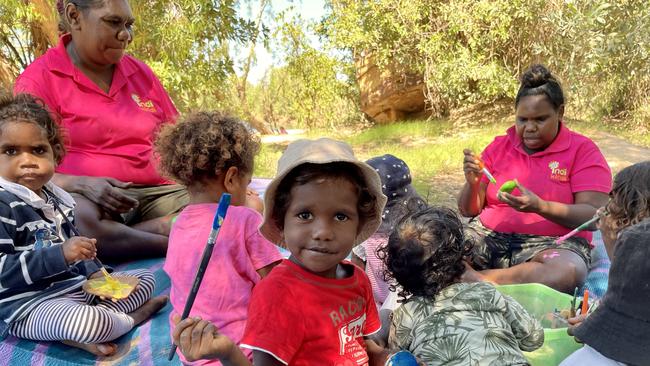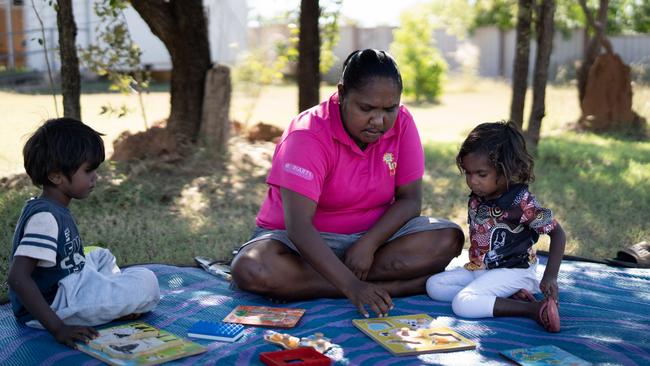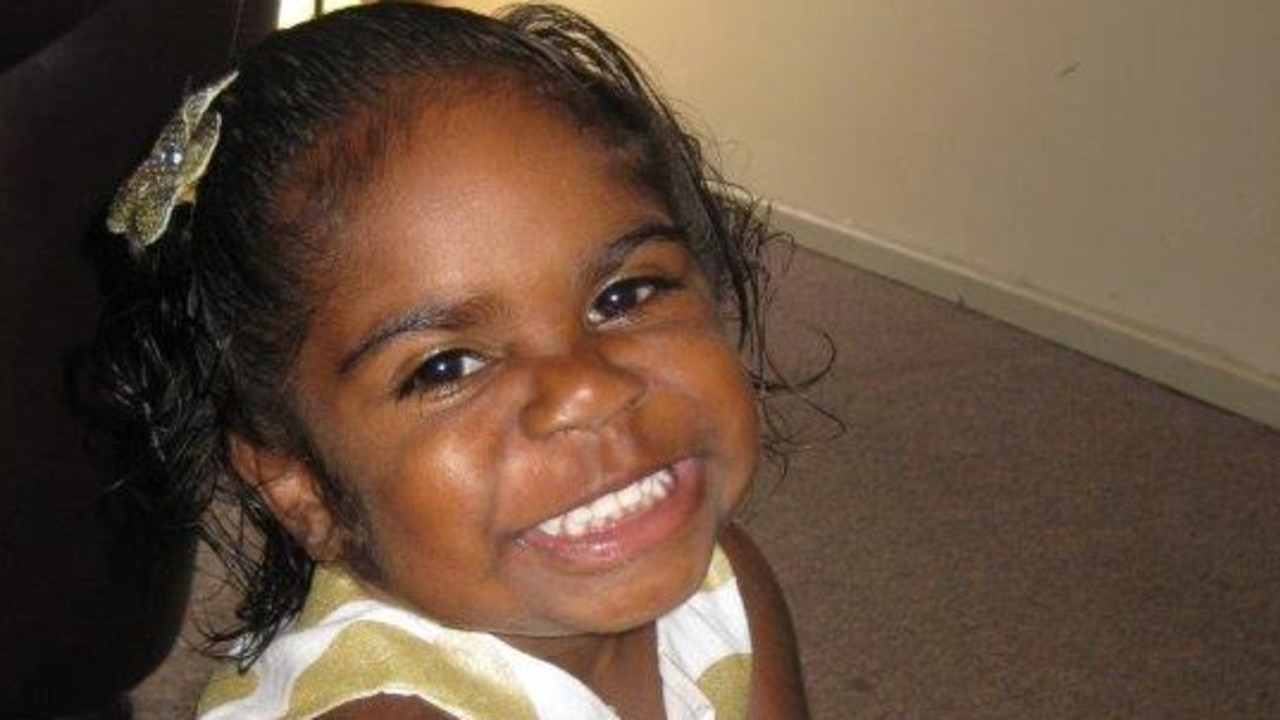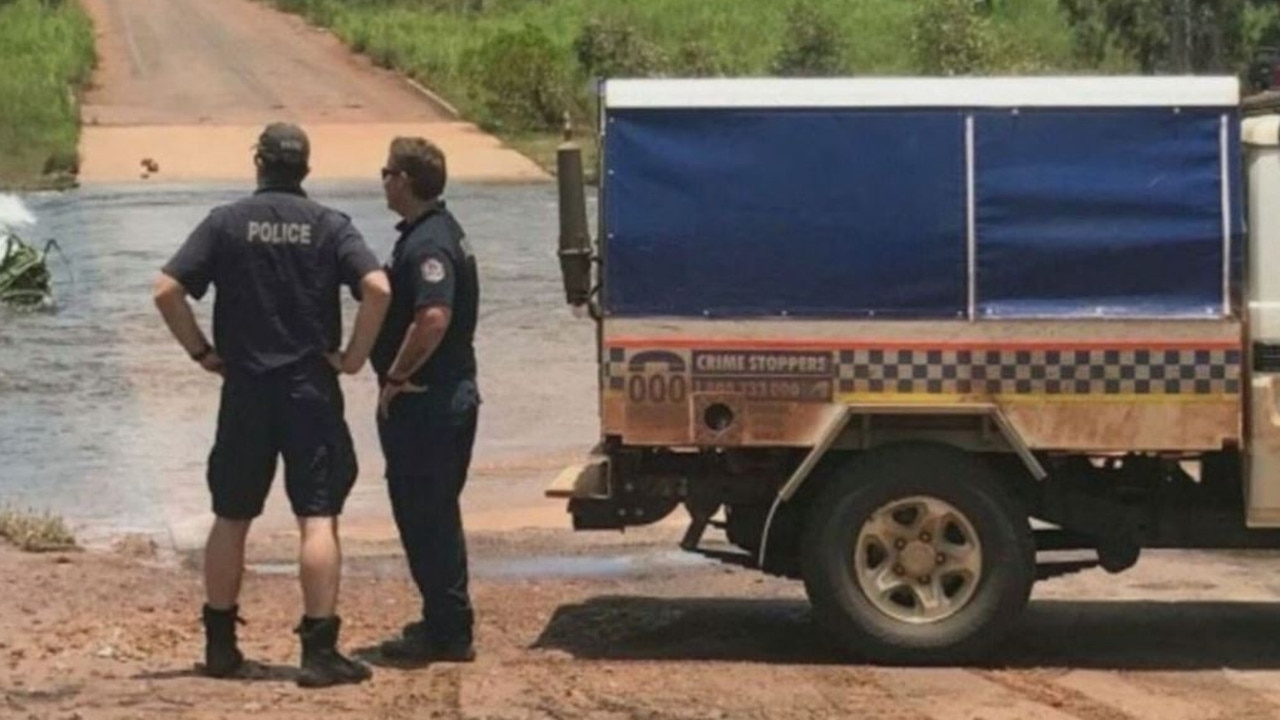Painting a better picture for Indigenous kids
Indigenous women in the Gulf of Carpentaria are improving the health and prospects of the community’s youngest children in a program of daily learning and play.

It is more than a playgroup but not yet school. Indigenous women in the Gulf of Carpentaria are improving the health and prospects of the community’s youngest children in a program of daily learning and play.
Young children in Borroloola, considered the fifth-most disadvantaged community in Australia, are defying a worrying downward trend in Closing the Gap data. ational data published by the Closing the Gap initiative shows Indigenous children in their first year of school were less ready than Indigenous children who went before them.
In 2021, the year of the most recent available national data, 34.3 per cent of Aboriginal and Torres Strait Islander children commencing school were assessed as being developmentally on track in all five of the accepted domains for development – emotional, social, cognitive, language and physical. This is a decrease from 35.2 per cent in 2018.
For Borroloola children under five, however, there has been significant improvement across the five developmental domains.
The percentage of Borroloola children assessed as vulnerable in one or more of those five domains decreased from 73.7 per cent in 2012 to 41.7 per cent in 2021. And the percentage of Borroloola children assessed as vulnerable in two or more domains has fallen from 41.7 per cent to 25 per cent since the Indi Kindi program started there a decade ago.
“Something is happening in Borroloola,” says Ros Moriarty, co-founder of the Moriarty Foundation that supports Indi Kindi.
An interim report by Deloitte Access Economics has now measured those improvements for Borroloola children and the community over the past decade. It finds the program could have much wider application. “Indi Kindi models an approach through which stronger outcomes could be delivered to all Australian children,” the report by Deloitte Access Economics found.
The benefits of Indi Kindi are being felt across the Borroloola community. For example, the program employs local women in a community where unemployment runs at around 75 per cent.

The program is deceptively simple. Children under five attend Indi Kindi with or without a parent or carer in locations that change with the seasons and circumstances.
Sometimes Indi Kindi is under a tree – sometimes indoors. Each weekday morning, the local women who run it drive around Borroloola in a bus to collect the kids. If the child they have come for is not waiting outside, they knock on the door. If they need to go a few doors down or drive to a second location, they will do it.
One of the strengths of the program is that the women who run it are either part of the families of the children or are known and trusted by the families.
The program is always fun but there is structure and meaning to the activities. That is in part because the 18 Indigenous women who work at Indi Kindi across four NT communities are either qualified early-childhood educators or studying for their qualification.
The educators talk often to the local clinic and this helps them identify health issues a child might have, such as an ear infection or scabies. The Deloitte report is being discussed among educators as a serious piece of work, which strongly makes the case for Indi Kindi to be funded by government.



